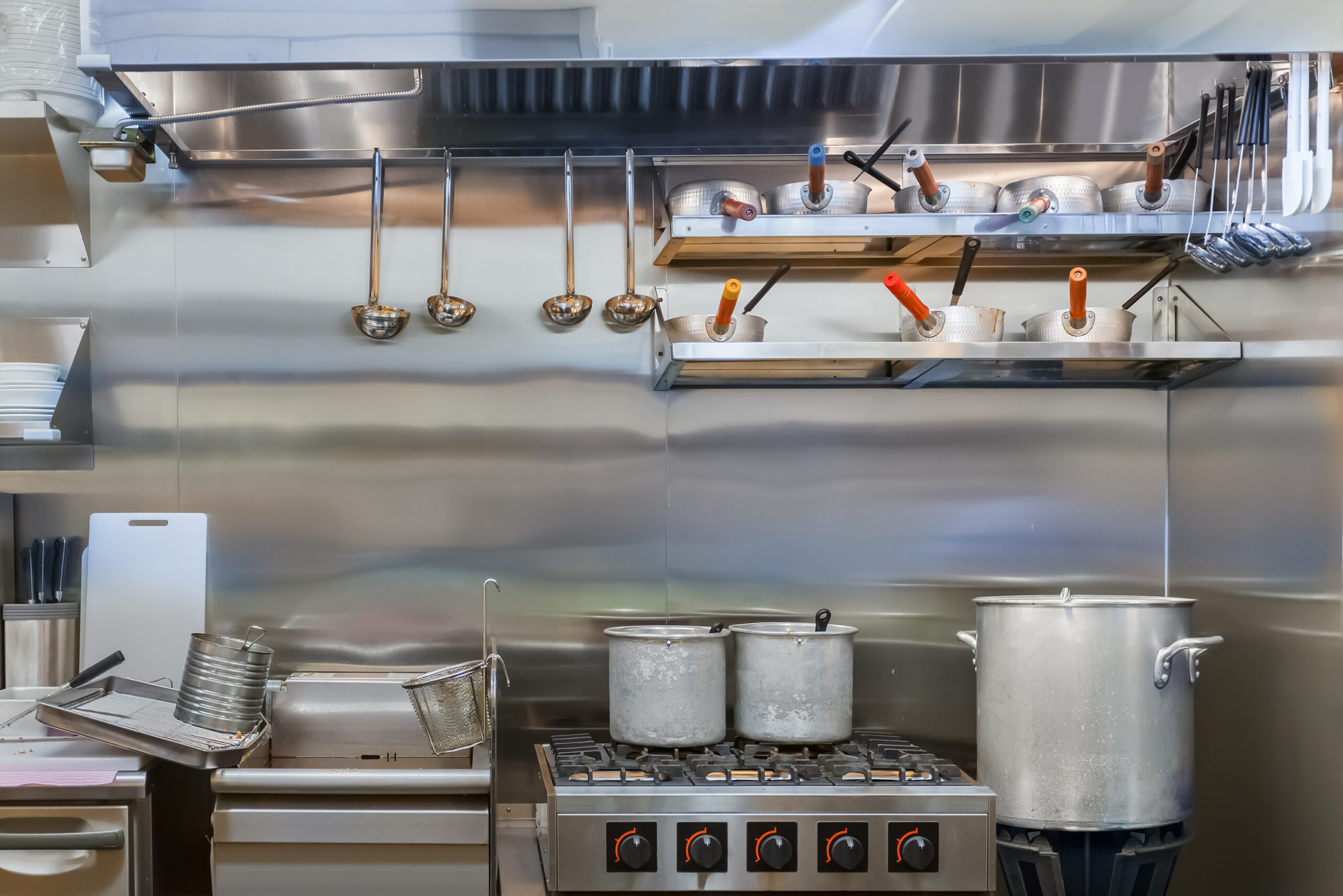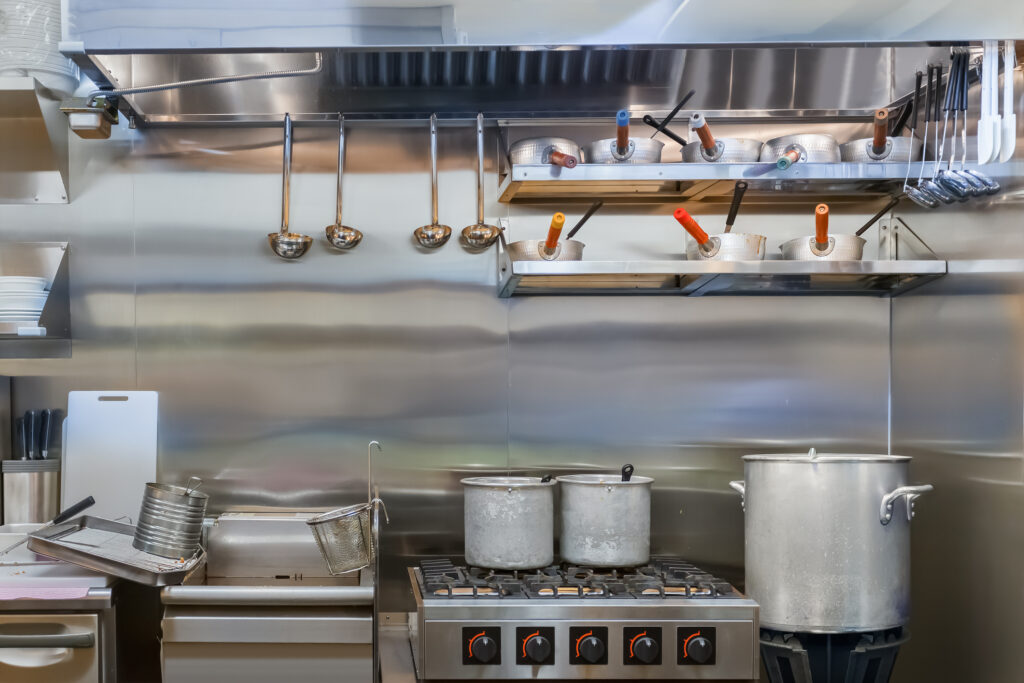DIY Kitchen Exhaust Clean Methods

Keeping your kitchen exhaust clean is essential for maintaining a healthy and safe environment in your home. Over time, grease and other debris can accumulate in the exhaust system, leading to reduced efficiency and increased fire risk. While professional cleaning services are available, they can be expensive. Fortunately, there are several DIY methods you can use to clean your kitchen exhaust effectively. In this article, we will explore these methods and provide valuable insights to help you keep your kitchen exhaust clean and functional.
Ontario-wide Kitchen Exhaust and Hood Cleaning – Best prices and service guaranteed.
The Importance of a Clean Kitchen Exhaust
A kitchen exhaust system plays a crucial role in removing smoke, odors, and grease particles from the air. It consists of a range hood, ductwork, and an exhaust fan. When cooking, grease and other particles are released into the air, and if not properly removed, they can accumulate in the exhaust system. This buildup can lead to a variety of issues:
- Reduced efficiency: A clogged exhaust system will not effectively remove smoke and odors, leading to poor air quality in your kitchen.
- Increased fire risk: Grease buildup in the exhaust system can become a fire hazard. According to the National Fire Protection Association, cooking equipment is the leading cause of home fires, and a dirty exhaust system can contribute to the spread of fire.
- Health concerns: The accumulation of grease and other particles in the exhaust system can create an environment for bacteria and mold growth, which can negatively impact indoor air quality and pose health risks.
Ontario-wide Kitchen Exhaust and Hood Cleaning – Best prices and service guaranteed.
DIY Kitchen Exhaust Cleaning Methods
Regular cleaning of your kitchen exhaust system is essential to maintain its efficiency and reduce fire risk. Here are some effective DIY methods you can use:
1. Remove and Clean the Range Hood Filters
The range hood filters are designed to trap grease and other particles. Over time, these filters can become clogged and less effective. To clean them:
Ontario-wide Kitchen Exhaust and Hood Cleaning – Best prices and service guaranteed.
- Remove the filters from the range hood.
- Fill a sink or basin with hot water and add a degreasing dish soap.
- Submerge the filters in the soapy water and let them soak for 10-15 minutes.
- Use a soft brush or sponge to scrub away the grease and debris.
- Rinse the filters thoroughly with hot water and let them dry completely before reinstalling.
2. Clean the Range Hood Exterior
The exterior of the range hood can also accumulate grease and dirt. To clean it:
- Wipe down the exterior surfaces with a mixture of warm water and mild dish soap.
- For stubborn grease stains, use a non-abrasive cleaner or a paste made of baking soda and water.
- Rinse the surfaces with clean water and dry them with a soft cloth.
3. Clean the Ductwork
Ontario-wide Kitchen Exhaust and Hood Cleaning – Best prices and service guaranteed.
Cleaning the ductwork is a more involved process and may require professional assistance. However, if you are comfortable doing it yourself, here are the steps:
- Turn off the power to the exhaust fan.
- Remove the vent cover and use a vacuum cleaner with a brush attachment to remove loose debris from the ductwork.
- Use a long-handled brush or a duct cleaning brush kit to scrub the interior of the ductwork.
- For stubborn grease buildup, mix warm water with a degreasing dish soap and use a sponge or cloth to wipe down the interior surfaces.
- Rinse the ductwork with clean water and let it dry completely before reinstalling the vent cover.
4. Clean the Exhaust Fan
The exhaust fan can also accumulate grease and dirt, affecting its performance. To clean it:
- Turn off the power to the exhaust fan.
- Remove the fan cover and use a vacuum cleaner with a brush attachment to remove loose debris.
- Wipe down the fan blades and motor housing with a damp cloth or sponge.
- For stubborn grease, use a degreasing dish soap and a soft brush to scrub the fan blades and housing.
- Rinse with clean water and let it dry completely before reinstalling the fan cover.
Ontario-wide Kitchen Exhaust and Hood Cleaning – Best prices and service guaranteed.
Maintaining a clean kitchen exhaust system is crucial for a healthy and safe environment in your home. By following the DIY methods outlined in this article, you can effectively clean your kitchen exhaust and reduce the risk of fire, improve air quality, and prolong the lifespan of your exhaust system. Remember to regularly clean the range hood filters, the exterior surfaces, and if comfortable, the ductwork and exhaust fan. By incorporating these cleaning methods into your routine, you can ensure that your kitchen exhaust remains clean and functional for years to come.
Learn more about “Cleaning Kitchen Exhaust at Home” here.
Frequently Asked Questions about DIY Kitchen Exhaust Clean Methods

What Are Some Effective DIY Methods for Cleaning Kitchen Exhaust Filters?
One of the most critical components of your kitchen exhaust system is the filter, which traps grease and other particles. There are several effective DIY methods for cleaning them:
Soaking Method: Soak the filters in a solution of hot water and dish soap or a mixture of vinegar and baking soda for at least 30 minutes. After soaking, scrub away any remaining grease with a non-abrasive brush.
Dishwasher Method: Some filters are dishwasher-safe. Check your manufacturer’s guidelines and if permitted, run the filters through a high-heat cycle in your dishwasher.
Chemical Cleaners: Over-the-counter degreasers can be used, but ensure you thoroughly rinse the filters afterward to remove all chemical residues.
How Can I Clean the Hood and External Areas of My Kitchen Exhaust?
For cleaning the hood and other external parts, here are some effective methods:
Sponge and Degreaser: Use a sponge or soft cloth along with a kitchen degreaser or a mixture of dish soap and hot water. Always avoid any electrical parts.
Stainless Steel Cleaner: If your hood is made of stainless steel, specialized stainless steel cleaners can give it a polished look while removing grease and fingerprints.
Baking Soda: Make a paste with water and baking soda, apply it to the surface, let it sit for a few minutes, and then scrub it off.
Remember to disconnect the power source before you begin cleaning to ensure safety.
Can I Use a Vacuum Cleaner to Remove Loose Particles from the Exhaust System?
Yes, using a vacuum cleaner can be an effective way to remove loose particles and dust from accessible parts of your exhaust system. A handheld vacuum or one with a hose attachment can reach tight spots. However, a vacuum cleaner is not sufficient for removing grease build-up, which typically requires specialized cleaning solutions or methods.
How Do I Know If My DIY Cleaning Is Effective?
After your DIY cleaning, run your hand over the surfaces. They should feel clean, not greasy or sticky. Also, turn on the exhaust fan. You should experience better airflow and reduced odors. While these are good indicators, they aren’t definitive proof that your exhaust system is as clean as it should be, especially the parts you can’t easily see or reach. For those, periodic professional cleaning is recommended.
What Safety Measures Should I Take While Performing DIY Kitchen Exhaust Cleaning?
Safety is paramount when cleaning your kitchen exhaust system:
Electrical Safety: Always disconnect the power source before you start cleaning.
Chemical Safety: If you are using chemical degreasers or cleaners, ensure that the area is well-ventilated and that you’re wearing appropriate safety gear like gloves and goggles.
Slip Hazards: Grease and water can create slippery conditions. Use mats or towels to soak up excess water or grease.
Equipment Safety: If you need to use ladders or step stools, make sure they are stable. Do not overreach or use them on uneven surfaces.
Remember, DIY methods are suitable for routine maintenance but are no substitute for a professional cleaning, which is crucial for maintaining a safe and efficient kitchen exhaust system.







